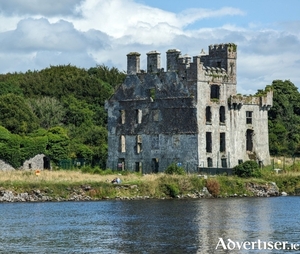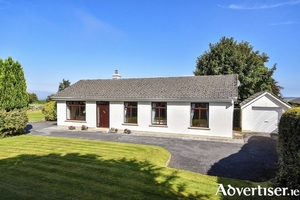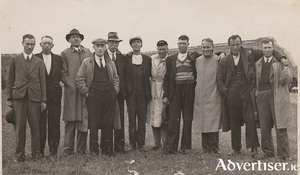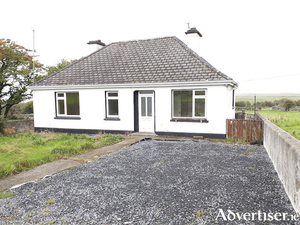Search Results for 'Menlo, County Galway'
10 results found.
An ideal family home in Menlough
Just 25 minutes from Briarhill, Galway, this is a really attractive home within 1.5km of the village amenities at Menlough.
Galway City Council secures funding for the restoration of Menlo Castle

Cllr Frank Fahy’s proposal for the restoration of Menlo Castle has been met with resounding success as Galway City Council announces the receipt of €85,000 in heritage funding for this historic project.
Menlo home for sale with all the benefits of country living close to city

Mullery Auctioneers has recently brought to the market a beautifully presented four-bedroom residence at Killoughter, Menlo.
Demolition of former Corrib Great Southern is 'very important to people on the east side of Galway'

I welcome confirmation given to me by the Galway City Council that demolition of the old Corrib Great Southern Hotel building will commence in early December.
Stone mad

Like most towns, Galway was built using native stone and there was plenty of that around. There were black limestone quarries in Menlo and Angliham, and a limestone quarry at Merlin Park worked by the Blake family until about 1850 and later by Sibthorpes of Dublin. In about 1880, a Scotsman named Millar rented a number of quarries in the Galway area, two at Shantalla, one at Ballagh near Bushy Park, and one at St Helen’s, Taylor's Hill, where they quarried fine-grained red granite. There was a marble and granite works at Earl’s Island where one of the employees was a stonemason named Pat Fahy.
Tragedy at Menlo Castle
In the early hours of July 26 1910 Menlo Castle, on the bank of the river Corrib, was totally gutted by a fire. Sir Valentine and Lady Blake’s daughter, Ellen, was lost in the flames. The cook Delia Early, who lived on the attic floor, jumped to her death. Delia shared a room with housemaid Anne Browne, who waited until her clothes were in flames, before jumping. She landed on a pile of hay placed by other household staff to break her fall. Severely injured and burnt, Anne was driven on an open truck, slowly into the Galway Infirmary, lying on a door to ease her movement and pain. Local farmers gave her milk to drink to try to cool her down.
Menlo oarsmen

One of the great sporting achievements of the last century was the remarkable success of a group of Irish speaking farmers and local men from Menlo. During a very wet spring when they could do little work on their farms or on the bog, as they watched rowing crews going up and down the river, a group of them decided to form a rowing club. They asked to become members of Menlo Emmetts Hurling Club and adopted the name. Many of them would have spent a lot of time on the river, but that did not mean they knew how to handle a racing boat. When they took their clinker out for the first time, it took them a good while to steady the boat. A local man watching, described them as “The Wobblers” and this name stuck for a few years.
Two funerals at Menlo Castle cemetery
I have mentioned recently Sir William Wilde’s energetic guide to Lough Corrib - Its shores and Islands (published 1867), and his excitement as he and his family steamed across Ireland from Dublin, to begin their long summer holiday at their holiday home, Moytura Lodge, Cong, at the very north of the lake. From steam train to the Eglinton steamer, which left Galway every day to service the villages on the lakeshore, including Cong, the Wildes steamed passed the ancient home of the Blakes at Menlough (Menlo)* located just before the river enters the great lake.
Beautiful Menlo property on the market

John Quinn has received instructions to offer for sale a lovely three bedroom bungalow residence on a 0.9 acre site at Anglingham, Menlo. This property, which is new to the market, was built in the 1950s but has been refurbished.
The mighty men of Menlo

July 4 1929 was an important day in the history of rowing in this country, and particularly in this part of the country, because that was the day that Emmetts Rowing Club from Menlo brought the first senior eights championship trophy to Galway. Almost all the members of the crew were native Irish speakers and all lived locally and worked by the river. During a very wet spring when they could do very little farmwork, someone suggested to them that as boatmen, if they were all put into a racing eight, they would be able to take on any crew.

